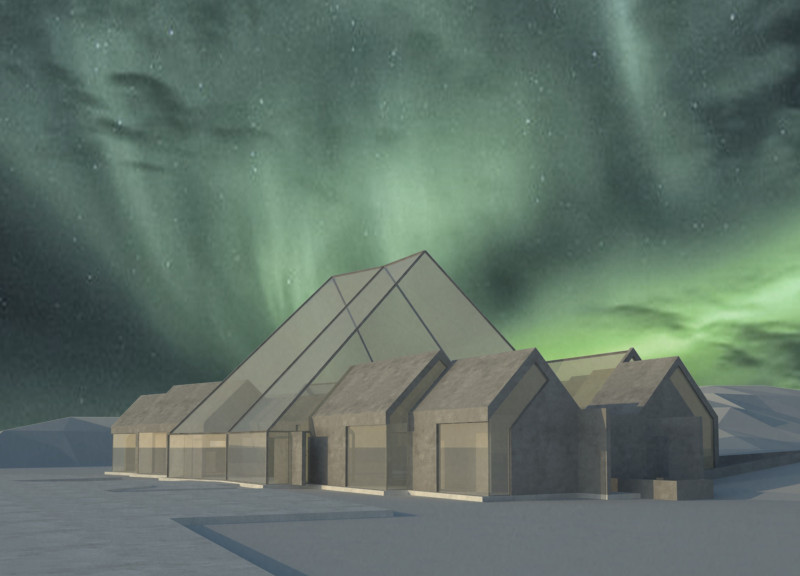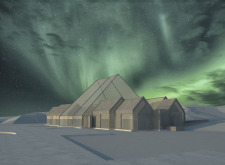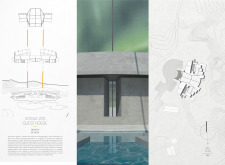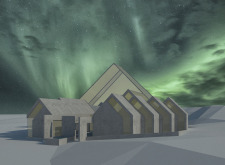5 key facts about this project
Functionally, the guesthouse is designed to accommodate guests seeking both comfort and a unique experiential connection to the natural world. It features communal areas for socializing, dining, and relaxation, as well as private quarters that provide solitude and privacy. The design thoughtfully considers guest movement, creating spaces that are not only functional but also evocative of the beauty found in the external environment.
Key elements of this project include a robust yet minimalist architectural form that mirrors the topography of the area. The layout of the guesthouse allows for both nucleated communal spaces and intimate private rooms, promoting a balance between social engagement and individual retreat. The strategic placement of large glass facades maximizes natural light and captures expansive views of the landscape, particularly the northern lights, enhancing the overall guest experience.
Materiality plays a crucial role in the design of the Vogáf Jós Guesthouse. The architects have chosen a palette that includes concrete, glass, wood, and local stone, ensuring the building is not only durable but also aesthetically in tune with its environment. Concrete provides structural longevity, while glass elements create transparency and connect indoor spaces with outdoor vistas. The use of wood introduces warmth to the interiors, fostering a welcoming atmosphere, and local stone grounds the structure in its geographical context.
The unique design approaches employed in this project emphasize sustainability and a deep respect for the local environment. Energy-efficient systems and materials are incorporated to minimize the ecological footprint, demonstrating an understanding of the need for sustainable architecture in contemporary design. The guesthouse also reflects cultural nuances through its architecture, with design elements that pay homage to local traditions, thereby enriching the visitor experience.
Overall, the Vogáf Jós Guesthouse not only provides accommodation but also invites a deeper reflection on the relationship between architecture and nature. It encourages visitors to engage with the surrounding landscape, offering an experience that is both immersive and introspective. For those interested in exploring the architectural details further, including architectural plans, sections, and profound design ideas, reviewing the project presentation offers valuable insights into this exemplary integration of architecture and environment.


























